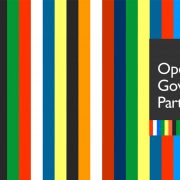|
Getting your Trinity Audio player ready...
|
By Kwazi Dlamini
US$1-trillion paid in bribes every year. Up to 30% of development aid lost to corruption annually. Corruption costs about 5% of global GDP every year.
We hear these statistics quoted often in articles, reports, interviews, and more, but do we actually know how accurate these frightening figures are?
Oslo-based anti-corruption advice team U4 Anti-Corruption Resource Centre raised questions about the credibility of 10 of the most commonly cited global corruption statistics, including the three mentioned at the beginning. The organisation reviewed these claims, tracing each to its source and evaluating its credibility and reliability, and published a report on its findings.
Over the past few decades, there have been many attempts to estimate and quantify the damage corruption causes. But this would apply only to corruption that we know about – since much of the dodgy doings remain secret it becomes difficult to firmly link circumstances to the corrupt deed and to put a value to the consequences.
The goal of the research, said U4, “is to provide more transparency and clarity about the origin and reliability of some of the most frequently cited global corruption statistics, together with an evaluation of whether those statistics are sufficiently credible to be presented by leading organisations in their public communications.”
The 10 statistics were selected because they have appeared prominently in speeches, fact sheets, issue briefs, and similar documents from major organisations. Results were grouped into credible, problematic, or unfounded (see below for explanation).
For more detail, read the report.
Inaccurate information
U4’s research found that not one of the oft-quoted numbers could be classified as credible. Only two of them – numbers 4 and 10 – came close. Furthermore, said U4, six of the 10 statistics were problematic, “some seriously so”, and the other four appeared to be entirely unfounded.
- Approximately US$1-trillion in bribes is paid worldwide every year (problematic)
- Approximately US$2.6-trillion in public funds is stolen/embezzled each year (unfounded).
- Corruption costs the global economy approximately US$2.6-trillion, or 5% of global GDP, each year (unfounded).
- Corruption, together with tax evasion and illicit financial flows, costs developing countries approximately US$1.26-trillion per year (problematic).
- Approximately 10%–25% of government procurement spending is lost to corruption each year (problematic).
- Approximately 10%–30% of the value of publicly funded infrastructure is lost to corruption each year (unfounded).
- Approximately 20%–40% of spending in the water sector is lost to corruption each year (unfounded).
- Up to 30% of development aid is lost to fraud and corruption each year (problematic).
- Customs-related corruption costs World Customs Organization members at least US$2-billion per year (problematic).
- Approximately 1.6% of annual deaths of children under 5 years of age (over 140 000 deaths per year) are due in part to corruption (problematic).
The report also found that most of the statistics were produced one or two decades ago but poor and unverified referencing gives the impression that they are more recent.
Now these findings do not mean that the problems described through these statistics do not exist, but simply signal to the anti-corruption community that it should do better in verifying and tracing back to the origin of the statistics presented to the public.
Furthermore, the problems are not exaggerated. In fact, U4 suggested just the opposite – that these numbers could be understated, therefore downplaying the huge price of corruption.
Using statistics in advocacy and policy
The report noted that it is normal for international organisations, civil society groups and donor agencies to put global corruption statistics in their public reports, advocacy documents and speeches. When these organisations report corruption statistics, the exact number matters less than the fact that the number seems big – this means the numbers function more as a call to action than as a guide to action. The result is that numbers put out to the public are unreliable, as precision does not matter much.
These estimates need scrutiny because they inform advocacy and public policy decisions and at times set policy priorities, and for these reasons, the U4 believes it is important to ensure that they are reliable.
The U4 warned that the anti-corruption community must set an example and furnish the public with high quality and verified quantitative statistics. The organisation’s emphasis on evidence-based policy and advocacy should drive the anti-corruption community to ensure its own credibility.
While the report conceded that developing and presenting global corruption estimates is a difficult task, it maintained that anti-corruption organisations and agencies should prioritise researching the statistics they present to the public. When credible verification is not achievable, organisations must qualify their statistics in a correct manner that will allow them to convey their message effectively.
The U4 report suggested ways that organisations can improve the statistical corruption-related claims they present to the public. The report also looked at to what extent anti-corruption organisations can reliably use these estimates for their advocacy work.
Grading of results
Credible statistics
The research grouped a statistic as credible only when it could trace it to an analysis that showed a transparent method and reliable data, followed by a substantive assessment of the data. The difficult task was to trace each statistic to the original source because often organisations do not give or list the sources of the statistics they reference. The report pointed out that it often seems like organisations use statistics that are commonly used by other organisations without themselves doing due diligence to ensure they are reliable.
None of the 10 assessed statistics could be deemed credible.
Problematic statistics
Statistics found to be problematic were those that can be traced to their origin, but the data and techniques used looked problematic. They may be based on unexplained and unjustified extrapolations and subjective observations without any first-hand knowledge.
The U4 warned against organisations citing problematic statistics without qualifying them.
Approximately one trillion US dollars in bribes is paid worldwide every year – this statistic is repeatedly cited by big organisations like the UN and the OECD. The U4 report said there is not enough evidence to justify this statistic because the original source provides a general description of the methods used to arrive at this estimate. Furthermore, the actual data and full description of the methodology has never been made public.
Unfounded statistics
U4 cautioned anti-corruption organisations not to use unfounded statistics for their work under any circumstances. Unfounded corruption statistics refer to those whose original source could not be located, or the original source relied on guesswork, or the original source mischaracterised the data.
An example of this is the $2.6-trillion in public funds that is said to be stolen every year. Senior officials at the UN and the African Development Bank use this statistic frequently.
But according to U4, this statistic appears to be due to misrepresentation and misinterpretation of another statistic, and there was no evidence of any organisation or researcher who claimed to have come up with the statistic through data and extensive research.








